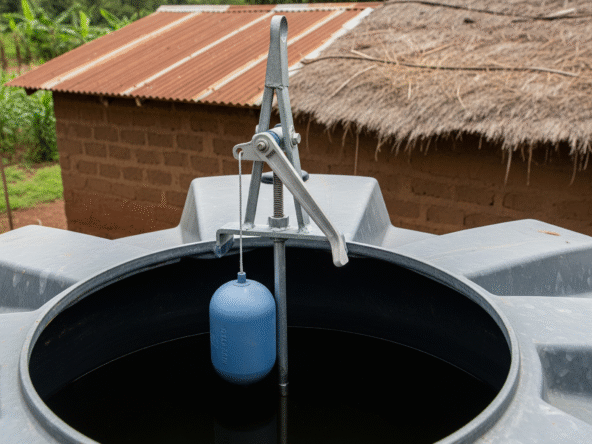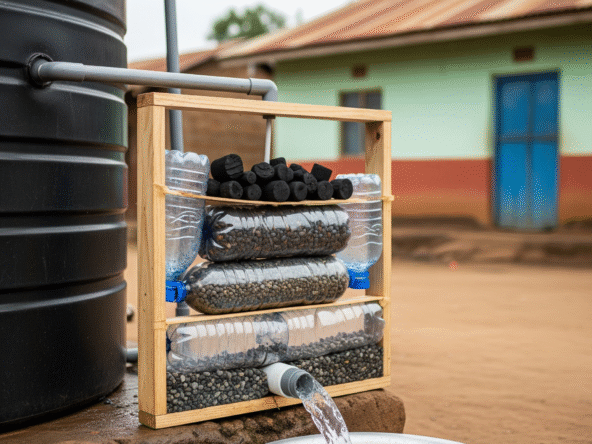In Kenya, having a reliable water storage system is a must whether you’re building your own home, managing a rental unit, or farming on the outskirts of the city. One of the key choices to make early in your project is whether to install an underground water tank or opt for a more traditional above-ground tank, such as a poly plastic tank or steel tank.
Each option comes with its advantages, and your decision will largely depend on the space available, your budget, maintenance preferences, and the purpose of water storage. Let’s explore how both systems compare and when it makes the most sense to choose one over the other.
Why Above-Ground Water Tanks Remain Popular
For many Kenyan households, especially in peri-urban or rural areas, above-ground plastic water tanks are the go-to solution. They’re readily available in a wide range of sizes from the compact 500 litre tanks to large 10,000 litre water tanks and are easy to install and manage.
Installation is straightforward: place the tank on a strong, level base, usually a concrete or steel platform, and connect it to your rainwater gutters, borehole pump, or municipal supply. Because they are exposed, gravity-fed water flow is easy to achieve, and you can access the tank for cleaning, inspection, or upgrades without any special tools.
These tanks are ideal for budget-conscious homeowners, renters building temporary setups, and small farms. To explore trusted manufacturers, refer to Top Water Tank Brands in Kenya, which highlights well-known options such as Roto, Techno Tank, Jojo, and Kentank.
When Underground Water Tanks Make Sense
If you’re working with a small plot, steep slope, or simply want to maintain a clean, modern compound layout, underground water tanks offer a smart solution. These tanks commonly built with concrete, fiberglass (GRP), or steel are installed below ground, freeing up surface area for parking, gardening, or even structures like Outdoor Kitchens.
Because they’re hidden, they preserve the aesthetic value of the compound and are shielded from direct sunlight and temperature fluctuations, which can damage above-ground tanks over time. If you’re already considering a rainwater harvesting system, placing your tank underground is a perfect match, see Rainwater Harvesting in Kenya for setup ideas.
Underground tanks are especially practical in dense urban settings or where security and visual appeal are top priorities.
Key Differences at a Glance
Your choice between above-ground and underground storage may ultimately come down to trade-offs. Here’s how they compare:
- Budget: Above-ground tanks are more affordable and quicker to install. Underground tanks require excavation, concrete lining, and waterproofing, raising upfront costs.
- Space: If surface space is limited, underground storage is ideal. Above-ground tanks demand clear vertical and lateral space.
- Installation Complexity: A basic above-ground tank can be set up in a day. Underground tanks take longer and may require professionals.
- Maintenance: Above-ground tanks are easier to monitor for leaks, sediment buildup, or UV damage. Underground tanks need less frequent maintenance but are harder to access.
- Aesthetics and Security: Above-ground tanks can be an eyesore unless hidden or landscaped around. Underground tanks are invisible and secure from tampering.
If you’re building on a sloped plot where underground installations can double as support for terrace structures, visit Building on Sloped Plots in Kenya for relevant construction tips.
Sizes and Costs in the Kenyan Market
Whether you choose above-ground or underground, you’ll find a range of options to fit your needs. Here’s a breakdown of typical capacities and prices:
- Plastic (Poly) Tanks: From 1,000L to 10,000L, costing between KSh 8,000 and KSh 100,000, depending on the brand.
- Concrete Underground Tanks: Sizes range from 5,000L to 20,000L+, with costs starting at around KSh 80,000 but potentially going up to KSh 250,000 or more based on build quality and excavation depth.
- Steel Tanks: Usually custom-built, ranging between 2,000L and 20,000L, with costs between KSh 50,000 and KSh 300,000.
Want to make your water system more efficient? Combine your tank with Water-Saving Fixtures and Plumbing Tips to reduce waste and cut down on utility bills.
Design and Maintenance Tips
For above-ground tanks, always use UV-stabilized models and install them on a strong base preferably a concrete slab or steel frame. Ensure they’re covered properly to prevent contamination.
If you’re installing a tank below a driveway or paved area, waterproofing and structural reinforcement are critical. Explore creative surface options that pair well with buried tanks in Compound Paving Alternatives in Kenya.
Regular maintenance for underground tanks includes checking for cracks or leaks, ensuring filters and valves are clean, and periodically flushing out any sediment.
Which Option Works Best?
There’s no one-size-fits-all answer when it comes to water storage. If your priority is quick setup, affordability, and easy maintenance, an above-ground tank is your best bet. But if you value space-saving, aesthetics, and long-term water storage capacity, especially for rain harvesting or borehole integration, underground tanks offer unmatched functionality.
As you plan your build or upgrade your compound, consider how your choice will affect surrounding infrastructure—such as fencing, kitchens, walkways, or extensions. For ideas, check out Low-Cost Fencing for Kenyan Plots.


